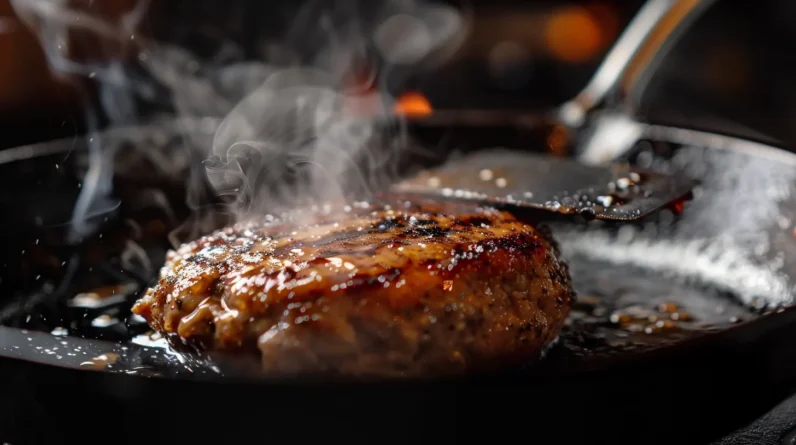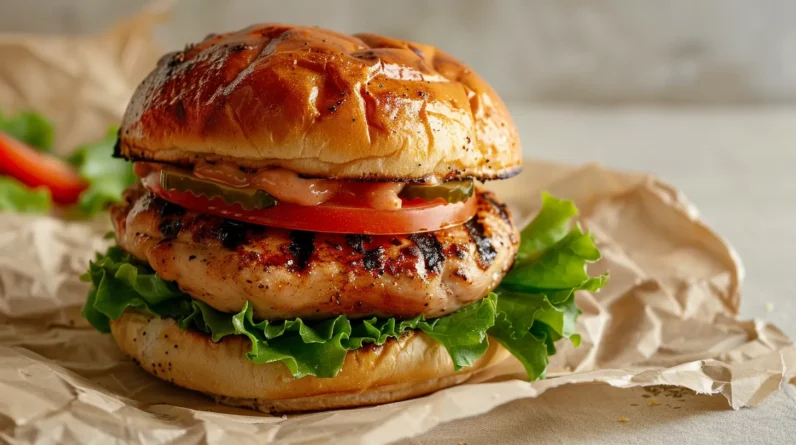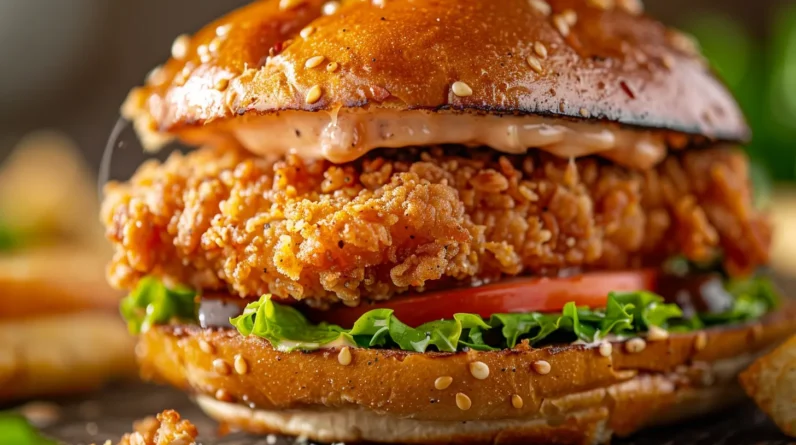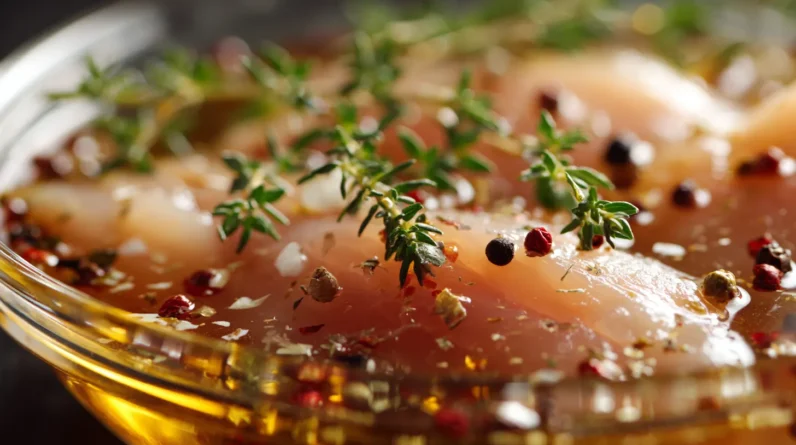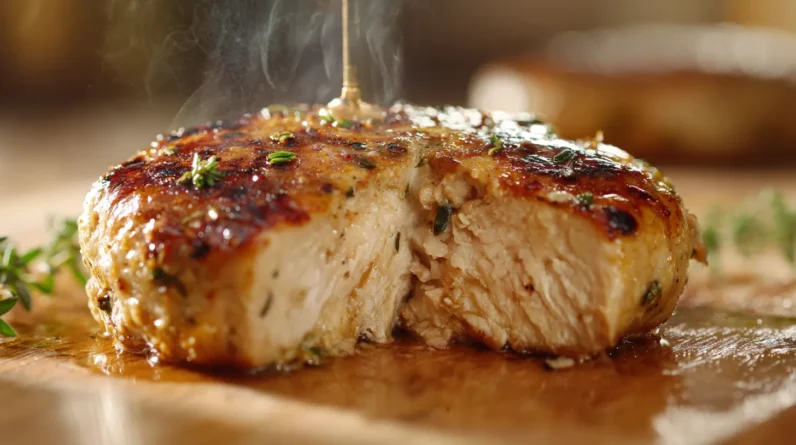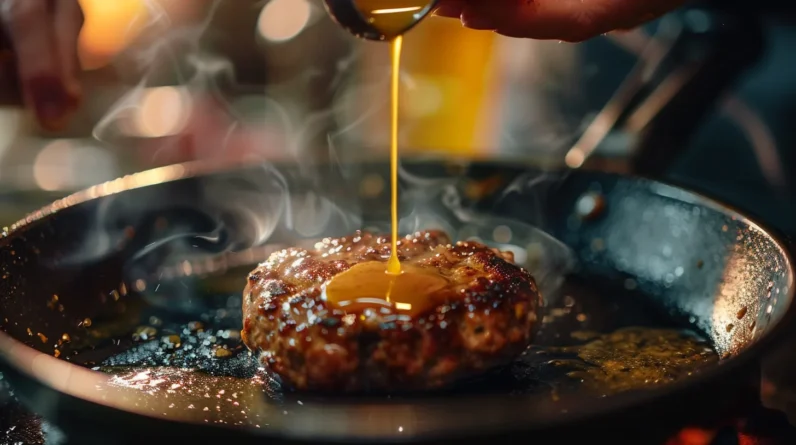
The single most effective technique we’ve discovered for preventing dry chicken burgers is incorporating a panade—a 1:1 mixture of breadcrumbs and liquid that creates moisture reservoirs throughout the lean meat matrix. We combine ¼ cup of this saturated paste per pound of ground chicken, which binds water into the protein structure and prevents moisture loss during cooking. This professional kitchen staple addresses chicken’s inherently low 7-10% fat content, transforming dense, dry patties into succulent burgers that maintain their juiciness even when cooked to the safe internal temperature of 165°F. Below, we’ll break down the precise ratios, mixing techniques, and cooking methods that maximize this game-changing approach.
Why Chicken Burgers Dry Out (And Why Fat Content Matters)
The fundamental challenge with chicken burgers stems from ground chicken’s inherently lean composition—typically containing only 7-10% fat compared to ground beef’s 15-20%. This disparity creates critical moisture retention issues during cooking. As proteins denature under heat, they contract and expel water—a phenomenon we call syneresis. Without sufficient intramuscular fat to lubricate muscle fibers and provide perceived juiciness, chicken behavior becomes problematic. The proteins bind tightly, creating a dense, dry matrix. We’re fighting against basic thermodynamics: chicken’s lower fat content means fewer lipids to coat our palate and mask moisture loss. Understanding moisture levels throughout the cooking process becomes essential. The solution isn’t simply adding liquid—we need to fundamentally restructure how these proteins behave under thermal stress.
The Secret Ingredient Professional Chefs Add to Ground Chicken
Panade—a mixture of bread and liquid—represents the professional kitchen’s most effective weapon against dry chicken burgers. This emulsified paste binds water directly into the meat matrix, creating moisture reservoirs that withstand high-heat cooking. We’ll combine fresh breadcrumbs with milk, buttermilk, or stock at a 1:1 ratio, allowing complete saturation before incorporation.
The panade functions beyond simple moisture retention. It acts as one of the most effective flavor enhancers, distributing seasonings uniformly throughout the ground chicken while preventing protein strands from binding too tightly during cooking. Unlike chicken marinades that merely coat surfaces, panade integrates moisture and seasoning internally. We recommend 1/4 cup panade per pound of ground chicken, mixed gently to preserve texture while maximizing juiciness retention during cooking.
How to Properly Mix and Form Your Chicken Patties
With panade incorporated, proper handling technique determines whether those moisture reservoirs survive the formation process or collapse before cooking begins. We’ll preserve ideal patty texture through minimal meat handling:
- Fold ingredients gently using a spatula rather than aggressive squeezing—overworking destroys panade pockets and develops unwanted protein bonds
- Divide mixture into portions before forming to reduce unnecessary manipulation
- Shape patties with wet hands using light pressure, creating ¾-inch thickness with shallow thumb indentations at centers
- Refrigerate formed patties uncovered for 30 minutes to develop surface tackiness that promotes superior browning
Each movement should serve purpose. Excessive kneading activates myosin proteins, creating dense, rubbery texture. Our objective remains architectural: maintaining distinct panade chambers throughout the matrix while achieving cohesive structure that won’t fragment during cooking.
Cooking Temperature and Timing for Maximum Juiciness
Unlike beef patties that benefit from high-heat searing, ground chicken demands precision temperature control to achieve simultaneous safety and succulence. We’ll target an internal temperature of 165°F—the USDA-mandated threshold for poultry—while employing cooking methods that prevent moisture loss.
Medium heat proves ideal: 350-375°F for grilling or pan-searing. This temperature range allows the patty’s interior to reach safe levels before the exterior desiccates. We recommend a digital instant-read thermometer inserted horizontally into the patty’s center.
Timing varies by thickness, but standard ¾-inch patties require 5-6 minutes per side. Resist pressing down during cooking; this expels valuable juices. Remove patties at 160°F; carryover cooking will elevate them to 165°F during a vital three-minute rest period.
Flavor Variations to Customize Your Perfect Chicken Burger
Ground chicken’s mild flavor profile presents a distinct advantage: it accepts bold seasonings and aromatics without the interference that more assertive meats impose. We’ll maximize this characteristic through strategic flavor layering.
Consider these essential flavor profiles:
- Mediterranean: Incorporate feta, sun-dried tomatoes, oregano, and garlic into the patty; finish with tzatziki and cucumber
- Asian-Fusion: Mix ginger, scallions, and sesame oil; top with sriracha mayo and pickled vegetables
- Southwestern: Add cumin, smoked paprika, and diced jalapeños; complement with chipotle aioli and pepper jack
- Gourmet Classic: Blend fresh herbs and shallots; elevate with truffle aioli and caramelized onions
Each variation benefits from spicy toppings and gourmet sauces that enhance rather than mask the carefully developed texture we’ve achieved.
Conclusion
We’ve journeyed through the crucible of moisture retention, where fat becomes our alchemist’s gold, transforming lean protein into succulent patties. Like master craftsmen tempering steel, we’ve learned that proper emulsification and precise temperature control don’t just improve technique—they fundamentally restructure the protein matrix. Now you’ll wield these principles with confidence: the strategic fat ratio, gentle incorporation, and controlled Maillard reaction. Your chicken burgers won’t merely satisfy—they’ll demonstrate culinary mastery.



